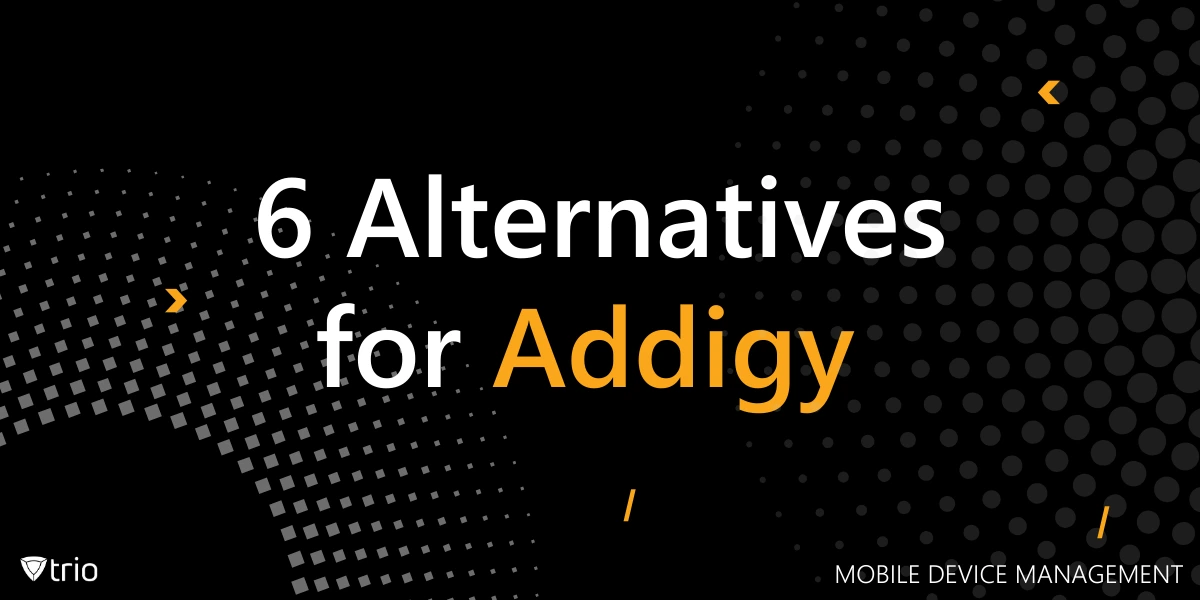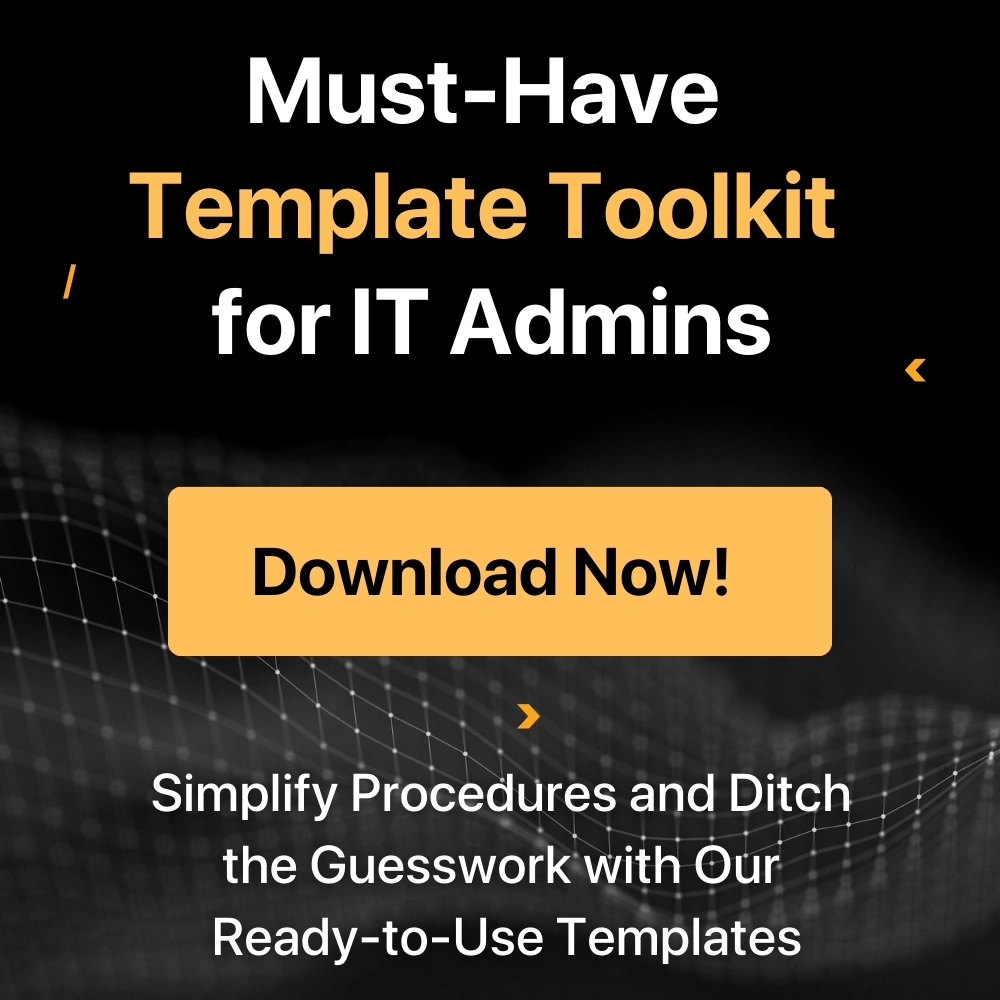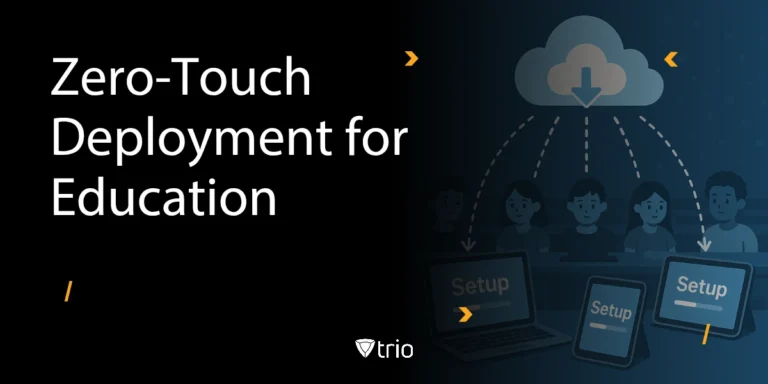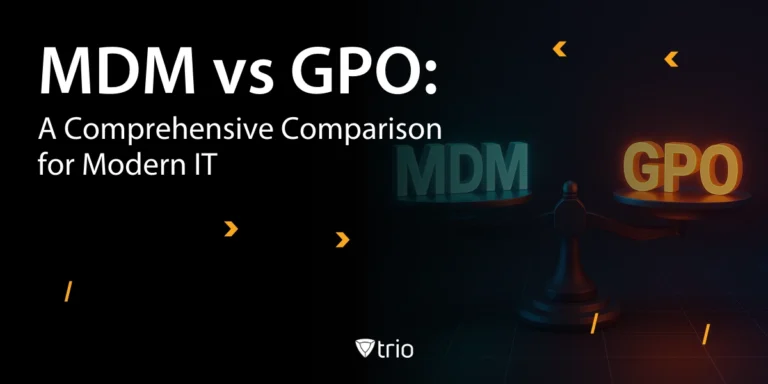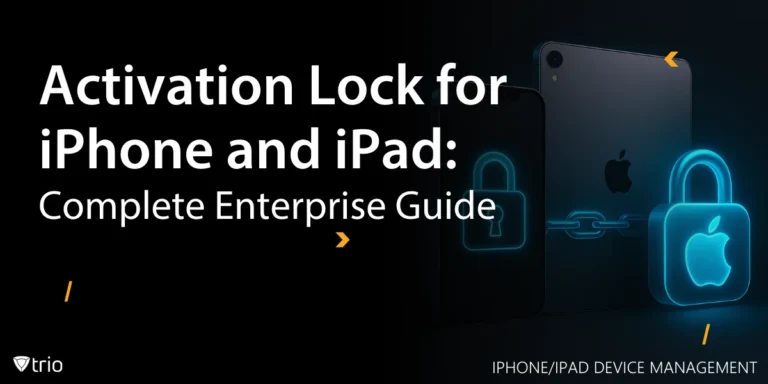If you’ve been using Addigy for Apple device management, you’re probably familiar with its sleek interface, its strong focus on macOS/iOS environments, and that moment of panic when your pricing tier jumps after onboarding your 101st device. Addigy is a solid choice, especially for Apple-heavy fleets, but as your IT infrastructure grows, so does your need for flexibility, integration breadth, and cost-efficiency.
Whether you’re scaling up rapidly, managing a hybrid fleet, or simply craving a few extra features Addigy doesn’t offer (hello Windows support, anyone?), this post is for you. We’ll walk you through five worthy Addigy alternatives for Mobile Device Management that bring serious firepower to the table for scalable IT teams.
Let’s dive in!
1. Trio – Modern MDM and Security Solution for Growing Businesses
Trio offers a powerful, all-in-one endpoint management solution that goes far beyond traditional Mobile Device Management. It provides a unified platform for managing devices across macOS and Windows, helping IT teams streamline operations by combining device management with advanced security capabilities.
A standout feature of Trio is its integrated vulnerability management and endpoint detection and response (EDR), enabling IT teams to proactively detect and address security threats without juggling multiple tools. Its compliance monitoring tools also support organizations in meeting key industry standards like SOC 2, HIPAA, and ISO 27001.
Trio makes device onboarding and offboarding easier through automation, ensuring devices are properly configured from the start and securely decommissioned when retired—significantly reducing administrative workload and minimizing human error.
For those looking to evaluate the platform, Trio offers a demo account and a free trial, providing an opportunity to test its features and see how it compares to competitors like Kandji within their current IT environment.
- Cross-platform support (macOS, Windows, Linux)
- Built-in vulnerability management and EDR
- Compliance monitoring for industry regulations
- Automated device onboarding and offboarding
2. Jamf Pro – An Enterprise-Ready Alternative to Addigy MDM
If Addigy is the sprightly startup of Apple MDM, Jamf Pro is its older, buffer sibling who went to grad school for enterprise IT. Jamf has been around the Apple ecosystem for ages and knows it better than most people know their phone passcodes. It offers incredibly granular control over macOS, iOS, iPadOS, and even tvOS. And yes, it comes with a price tag that says, “I’m serious about Apple.”
Technical Edge: Jamf Pro shines in zero-touch deployment via Apple Business Manager, advanced scripting, and deep patch management. It integrates smoothly with identity providers like Okta and Azure AD, and has tight API support for custom workflows—ideal for teams who don’t fear a little Python or shell scripting on a Monday morning.
Practical Take: For IT teams who live and breathe Apple, Jamf Pro is the natural step up. But be warned: the interface has a learning curve steeper than your grandma’s driveway. Still, once you get the hang of it, it’s incredibly powerful, and the community support is top-tier.
Opinion Alert: Jamf Pro is like the espresso of MDMs—strong, focused, and sometimes gives you a bit of anxiety if you’re not ready for it. If you’re scaling and staying Apple-only, this could be your long-term partner in a broader MDM strategy.
3. Kandji – A Sleek and Smart Addigy Alternative iOS Admins Will Appreciate
Kandji feels like the love child of Apple’s design sensibilities and an IT admin’s automation dreams. Think Addigy with a cleaner interface, more pre-built content, and a strong focus on reducing manual labor. Kandji’s “Blueprints” let you design device profiles quickly, and its library of compliance automations practically winks at you every time it prevents a user from disabling FileVault.
Technical Specs: Kandji offers real-time device monitoring, automatic remediation (yes, it fixes things before you get the ticket), and a host of zero-touch deployment features. It also supports Apple’s MDM framework to the letter, so you’re not missing out on anything fundamental.
Scalability: As teams grow, Kandji grows with them. Its automation-first approach makes it easier to manage hundreds (or thousands) of devices with minimal overhead. Their UI also saves your sanity when onboarding new team members or interns—especially the ones who still think “Command + Q” is a magic trick.
Honest Take: If your IT team wants to scale without losing sleep (or hair), Kandji offers a fantastic balance between simplicity and depth. It’s like Addigy’s cooler cousin who also happens to be a productivity guru among modern MDM software vendors.
4. Mosyle Business – The Cost-Conscious Addigy Alternative Android Teams Might Consider
Let’s be honest—scalability isn’t just about features; it’s also about budget. Enter Mosyle Business. It’s one of the most cost-effective Apple MDMs around, yet still comes loaded with essential tools for managing and securing a large device fleet. If Addigy feels like a boutique cafe, Mosyle is more like Costco—you get a lot for your money.
Under the Hood: Mosyle covers zero-touch deployment, compliance management, content filtering, and integrates with identity providers. It’s not the prettiest interface on the block, but who needs pretty when it gets the job done with minimal fuss?
Use Case: Perfect for education institutions and growing SMBs that want control without enterprise pricing. IT teams love its easy onboarding process and native integration with Apple School Manager and Apple Business Manager.
Real Talk: Mosyle may not win any design awards, but it punches way above its weight. If you’re growing fast and watching your spend, it’s a practical, reliable Addigy alternative android admins might even entertain—especially for teams navigating MDM pricing concerns.
5. Hexnode UEM – The Best Cross-Platform Alternative to Addigy MDM
So, your device fleet isn’t just MacBooks and iPads anymore? Maybe a few Surface Pros have snuck in, or (gasp) Android phones. If you're managing a multi-platform environment, Hexnode UEM offers a scalable, budget-conscious solution with solid cross-platform support.
Technical Rundown: Hexnode supports macOS, Windows, iOS, Android, and even Fire OS and tvOS. It offers geofencing, kiosk mode, app blacklisting/whitelisting, and detailed device analytics. Its policy-based management is a dream for IT teams needing flexible control across varied environments.
Scalability Benefits: As your team expands globally or across departments, Hexnode’s role-based access controls, automated workflows, and remote management tools help maintain sanity. Also, their customer support is surprisingly responsive—actual humans, not just chatbots named Steve.
Our Two Cents: If Addigy felt like a walled garden, Hexnode is the digital savanna—wide, wild, and ready for your entire device zoo. It’s easily a top alternative to Addigy MDM for teams managing cloud-based MDM deployments across diverse OS ecosystems.
6. Microsoft Intune – The All-in-One MDM Titan
Let’s wrap up with a big name—Microsoft Intune. While it may not be the first choice for Apple-only environments, Intune becomes a powerhouse when you’re working within a Microsoft 365 ecosystem. It’s deeply integrated with Azure, Office 365, and Defender, which makes it a no-brainer for IT teams leaning heavily into Microsoft’s stack.
What It Does Well: Intune covers mobile device management (MDM) and mobile application management (MAM), supporting Windows, macOS, iOS, and Android. With Conditional Access policies, integration with Microsoft Defender, and robust compliance reporting, it's made for enterprise-level scalability.
Perfect Fit For: Larger organizations already using Microsoft services at scale. You get centralized control over security, identity, and device compliance. But yes, be ready for some documentation spelunking—Intune is powerful, but also a bit… verbose.
The Verdict: Intune is like the Swiss Army knife of IT management—versatile, useful, but you might need a YouTube tutorial to figure out all the blades. For teams undergoing MDM migration, Intune offers a robust, integrated landing spot with long-term growth potential.
Why Trio is a Smart MDM Move for Growing Teams
Choosing the right MDM strategy isn’t just about features—it’s about finding a platform that grows with you. That’s where Trio comes in. Trio is built for scalability, offering robust cross-platform device management with a clean interface and powerful automation. Whether you’re migrating from Addigy or exploring MDM software vendors for the first time, Trio supports zero-touch provisioning, real-time monitoring, and flexible policy enforcement for macOS, Windows, iOS, and Android.
Curious how Trio stacks up? Try the free demo and see it in action. Or dive right in with our 21-day free trial—no strings, just smarter device management.
Final Thoughts
Addigy is a great tool—but it’s not a one-size-fits-all solution. As your IT team grows and your device mix diversifies, you need tools that scale with your needs without creating extra headaches or draining your budget.
Whether you go full-Apple with Jamf or Kandji, embrace a budget-friendly approach with Mosyle, branch out cross-platform with Hexnode, or dive deep into Microsoft-land with Intune, each of these Addigy MDM alternatives brings something unique to the table.
Just remember: MDM isn’t just about the tools—it’s about how you use them. So pick the one that makes your life easier, your team faster, and your help desk tickets fewer.
And may your remote commands always execute on the first try.
Get Ahead of the Curve
Every organization today needs a solution to automate time-consuming tasks and strengthen security.
Without the right tools, manual processes drain resources and leave gaps in protection. Trio MDM is designed to solve this problem, automating key tasks, boosting security, and ensuring compliance with ease.
Don't let inefficiencies hold you back. Learn how Trio MDM can revolutionize your IT operations or request a free trial today!
